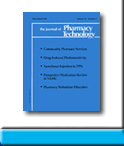 |
 |
THE INCIDENCE AND NATURE
OF ADVERSE REACTIONS DURING INTRAVENOUS ACETYLCYSTEINE THERAPY FOR
ACETAMINOPHEN OVERDOSE
Matitiahu Lifshitz, Perez
Kornmehl, and Haim Reuveni
To request full article click here.
OBJECTIVE: To determine the incidence of adverse drug reactions in patients with acetaminophen overdose following administration of intravenous acetylcysteine, and to evaluate the cost–benefit ratio of intravenous compared with oral acetylcysteine therapy.
METHODS: The incidence of adverse drug reactions to intravenous acetylcysteine therapy was studied retrospectively in all patients with acetaminophen overdose who were admitted to Soroka University Medical Center, Beer-Sheva, Israel, from 1994 to 1998. Data were obtained from hospital records. All patients were treated with a 20-hour intravenous regimen according to the Prescott protocol. Special attention was paid to the clinical manifestations of adverse reactions, time of onset, and history of patient allergy and asthma. Cost of therapy (drug prices, hospital per diems) for intravenous versus oral acetylcysteine administration was evaluated in accordance with average rates prevailing in Israel in December 1998.
RESULTS: Ninety-two patients, 32 adolescents aged 12–18 years (mean ± SD 14.2 ± 1.9) and 60 adults aged 18–52 years (28.2 ± 3.2), were treated with intravenous acetylcysteine for acetaminophen overdose during the study period. Three patients (3.2%) developed adverse reactions: one adult presented with a maculopapular rash and pruritus, and two adolescents developed mild urticaria; no other adverse reactions were reported. All adverse reactions occurred during administration of the loading dose, 15–20 minutes after initiation of therapy. The reactions subsided a few hours after the acetylcysteine infusion was stopped and did not require antiallergy therapy. None of the three patients had a history of allergy. The 20-hour intravenous acetylcysteine protocol is approximately three times less expensive than the recommended oral regimen in terms of drug cost and length of hospitalization.
CONCLUSIONS: Intravenous acetylcysteine is a relatively safe antidote for acetaminophen poisoning. The incidence rate of adverse reactions is low, and they are mild and easily controlled by termination of the infusion. We recommend intravenous acetylcysteine therapy, particularly for patients with vomiting caused by the acetaminophen overdose or by oral acetylcysteine therapy. The 20-hour intravenous acetylcysteine therapy has a cost–benefit advantage over oral therapy; however, the oral formulation is not approved by the FDA.
J Pharm Technol 2000;16:47-9.
To request full article click here.
|
|
|
||
|

